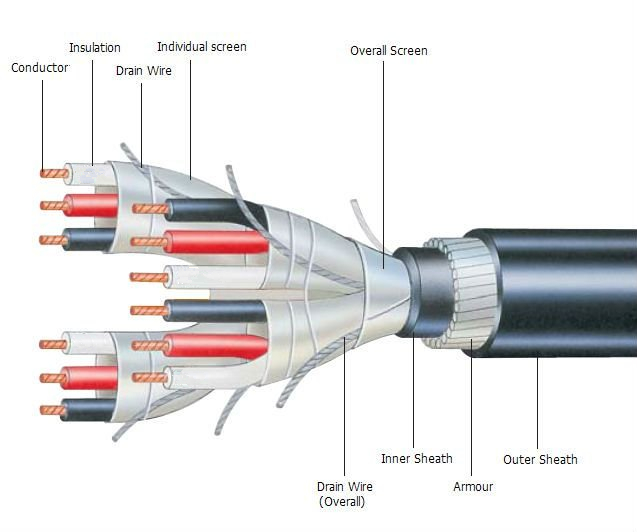For the purpose of providing a reliable connection between electronic devices, choosing a proper shielded twisted pair cable is essential to the network using copper cables. EMI (electromagnetic interference) is a disturbance in twisted pair cables. It affects the performance of an electrical circuit by electromagnetic induction, electrostatic coupling, or conduction. But with the help of cable shielding, cables can be immune to the disturbance and keep a stable connection. And this article will present some knowledge about cable shielding. Hope you can find it useful.
STP vs. UTP
Before getting to know cable shielding, you may wonder about the real difference between shielded twisted pair (STP) and unshielded twisted pair (UTP). As their names suggest, STP has a shield that works as a guard and drains the induced current surges to earth. Yet UTP has no cable shield with such a function. But the shortcoming of STP cables is the extra shielding cost added to an installation. Typically, STP cables are more expensive than UTP cables. And due to the stiffer and heavier shielding, coping with STP cables is more difficult. But if you pursue a higher performance, STP will be a preferable choice.
Types of Shields
There are mainly two types of shields: braided shield and foiled shield. Braided shield is made up of woven mesh of bare or tinned copper wires. It has better conductivity than aluminum and more bulk for conducting noise. An easier attachment with connectors can be achieved by crimping and soldering the braid. However, braided shield does not possess 100% coverage. It usually provides 70% to 95% coverage according to the tightness of weave. But as a matter of fact, 70% coverage is always sufficient if cables are fixed. Another shielding is foiled shield. This type of shielding uses a thin layer of aluminum and has a 100% coverage around the conductors. But the drawback is that its conductivity is lower than copper braided shield.
Today, people will use acronyms to name different shielding constructions. Take U/FTP as an example, the first letter “U” represents the outer shield or overall shield of cable, and the followed letter “F” represents the individual shield under the overall shield of each twisted pair or quad.

Here are some commonly used shielding constructions:
1) Individual Shield
U/FTP is the typical individual shielding using aluminum foil. This kind of construction has one shield for each twisted pair or quad above the conductor and insulation. Individual shield especially protects neighboring pairs from crosstalk.
2) Overall Shield
F/UTP, S/UTP, and SF/UTP are overall shielding with different shield materials. Overall shield refers to the entire coverage around the whole cable. This type of shielding helps prevent EMI from entering or exiting the cable.
3) Individual and Overall Shield
F/FTP, S/FTP, and SF/FTP are individual and overall shield. This type of construction has both layers of shielding. And its immunity to EMI disturbance is greatly improved.
Meanings of the abbreviated letters:
U = unshielded
F = foiled shielding
S = braided shielding
TP = twisted pair
Applications
As for the application in 10GBASE-T Ethernet, UTP, U/FTP, F/UTP, F/FTP and S/FTP are often used. But their practicable cable categories are varied from cat 6/6a to cat 7/7a. When twisted pair cable is deployed for 40GBASE-T Ethernet, U/FTP, F/UTP, F/FTP, S/FTP are applied under cat 8/8.1/8.2.
Conclusion
Adopting twisted pair cable shielding is an effective method to prevent EMI from interfering signal transmission. And there are different shielding constructions for you to choose. Of course, using twisted pair without cable shielding is also feasible if your budget is limited. Wish you find the most suitable twisted pair cable for your project!

没有评论:
发表评论